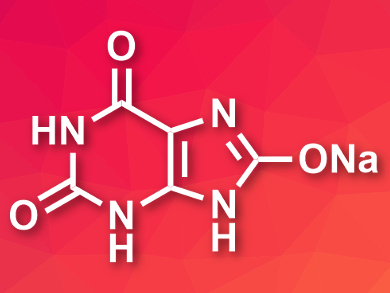Gout is a disease caused by excess uric acid. The uric acid forms monosodium urate (MSU, pictured) monohydrate crystals in the body, which are needle-like and cause inflammation, especially in the joints. If the MSU crystals could be destroyed, it would alleviate the symptoms.
Wuzong Zhou and colleagues, University of St Andrews, UK, have investigated possible methods for breaking down MSU crystals at a biologically relevant pH of 7.4. The team prepared the MSU crystals by combining sodium hydroxide and uric acid and characterized them using powder X-ray diffraction. The urate anions are connected by hydrogen bonds and form sheets, which are held together by sodium ions between the sheets. Breaking down this structure chemically would require the removal of sodium or high pH values, which are not feasible in the human body.
Sonication, in contrast, can safely be used as a medical treatment. It has been used to alleviate pain caused by gout, but the mechanism had not been understood in depth. The team sonicated MSU crystals and found that the crystals were broken down into non-crystalline MSU polymer chains and dissolved MSU. The researchers attribute this to a breaking of the hydrogen bonds between the urate molecules, which causes the crystals to be “peeled off” strip-by-strip. According to the team, this fundamental research could help with the development of a physical therapy for breaking down gout stones.
- Structure and cleavage of monosodium urate monohydrate crystals,
Rachael G. E. Molloy, Weihao Sun, Jialu Chen, Wuzong Zhou,
Chem. Commun. 2019.
https://doi.org/10.1039/c8cc10050k



